About the Authors
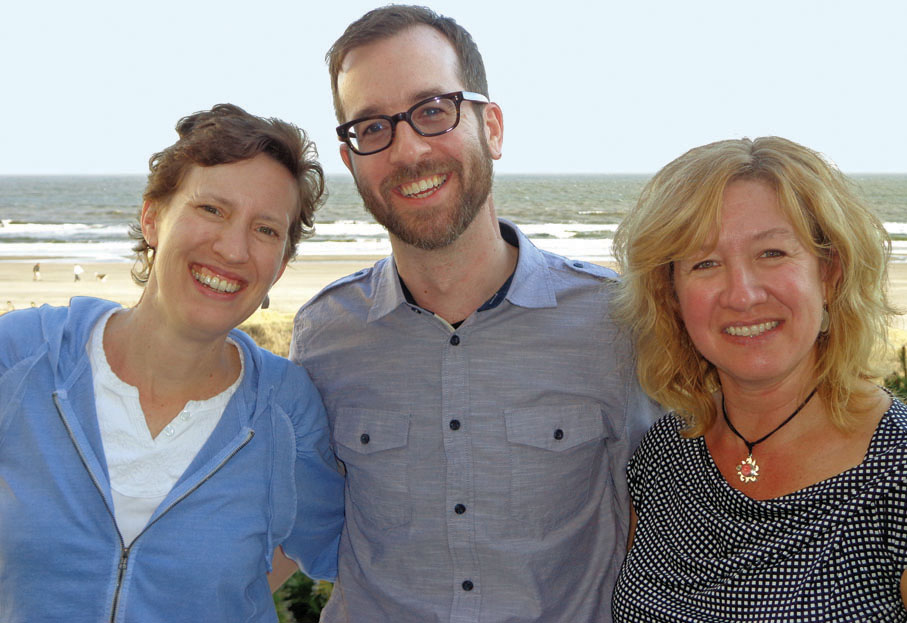
Michèle Shuster, Ph.D., is an associate professor in the biology department at New Mexico State University in Las Cruces, New Mexico. She focuses on the scholarship of teaching and learning, studying introductory biology, microbiology, and cancer biology classes at the undergraduate level, as well as working on several K-12 science education programs. Michèle is an active participant in programs that provide mentoring in scientific teaching to postdoctoral fellows, preparing the next generation of undergraduate educators. She is the recipient of numerous teaching awards, including the Westhafer award for Teaching Excellence at NMSU. Michèle received her Ph.D. from the Sackler School of Graduate Biomedical Sciences at Tufts University School of Medicine, where she studied meiotic chromosome segregation in yeast.
Janet Vigna, Ph.D., is an associate professor in the biology department at Grand Valley State University in Allendale, Michigan. She is a science education specialist in the Integrated Science Program, training and mentoring K-12 science teachers. Janet has 18 years of undergraduate teaching experience, with a special interest in effectively teaching biology to nonmajors. She has recently been recognized with the GVSU Outstanding Teacher Award. Her scholarly interests include biology curriculum development, the effective use of digital media in science education, and research on the effects of biological pesticides on amphibian communities. She received her Ph.D. in microbiology from the University of Iowa.
Matthew Tontonoz has been a development editor for textbooks in introductory biology, cell biology, biochemistry, evolution, and environmental science. After a brief stint in medical school in California, he realized he was better suited to saving sentences than saving lives. Matt received his B.A. in biology from Wesleyan University and his M.A. in the history and sociology of science from the University of Pennsylvania. He is currently staff science writer at the Cancer Research Institute, where he covers advances in cancer immunology and blogs about the history of medicine. He lives in Brooklyn, New York.
Gunjan Sinha has been writing about science for over a decade. Her articles have been published in Science, Nature Medicine, Nature Biotechnology, Scientific American, and several other magazines and journals. She holds a graduate degree in molecular genetics from the University of Glasgow, Scotland, and a graduate degree in journalism from New York University. She currently works as a freelance science journalist and lives in Berlin, Germany.
v
DEAR READER,
Thank you for opening this book! We hope that your journey through it will be as rewarding for you as our journey in writing it has been. When we first came together to collaborate on the development of this text, our biggest goal was to get students interested in biology by showing its relevance to daily life. We wanted to create a textbook that students would actually want to read. Our model and partner in this process has been Scientific American, a visually stunning magazine that’s been successfully bringing science to the public for more than 150 years. The result is a unique textbook that takes a novel approach to teaching biology, one that we think has the potential to greatly improve learning. We hope that this brief introduction will serve as a road map of the book, so that you can get the most out of your experience with it and be as captivated by the wonders of life as we are.
The main approach of each chapter is the presentation of key science concepts within the context of a relevant and engaging story—a story of discovery, of determination, of human interest, of adventure. From the search for life on Mars to the problem of antibiotic-resistant bacteria, we use stories to bring science to life and to show scientists in action. After all, science is not just a collection of facts, so why would we present it that way? We ask you, our students, to study biology so you can use knowledge to make choices in the real world. We value those stories that will lead you to ask questions about life and how it works and to see the relevance of biology to daily activity. We have seen how stories engage students in our classrooms, and we hope you will be similarly intrigued.
While gripped by a story, you may not even realize how much you are learning. To reinforce the basic learning process, we rely on several strategies:
 Each story is prefaced by a set of Driving Questions. By keeping these in mind as you navigate the story, you will have a good framework for learning the key science concepts.
Each story is prefaced by a set of Driving Questions. By keeping these in mind as you navigate the story, you will have a good framework for learning the key science concepts. Eye-catching Infographics highlight and drill down into the science of each story. The set of Infographics in a chapter provides a science storyboard for that chapter, illustrating the key scientific concepts and linking them to the story.
Eye-catching Infographics highlight and drill down into the science of each story. The set of Infographics in a chapter provides a science storyboard for that chapter, illustrating the key scientific concepts and linking them to the story. Key terms are defined in the margins, making it easy to check a definition without having to leave the story.
Key terms are defined in the margins, making it easy to check a definition without having to leave the story. Chapter summaries provide a concise set of bullet points that distill the key scientific concepts.
Chapter summaries provide a concise set of bullet points that distill the key scientific concepts. Test Your Knowledge questions at the end of each chapter reinforce basic facts and also allow the facts to be applied through data interpretation and mini cases.
Test Your Knowledge questions at the end of each chapter reinforce basic facts and also allow the facts to be applied through data interpretation and mini cases.
By taking full advantage of these resources, you will be better able to appreciate how biology affects each and every one of us as well as our close and distant relatives on this planet. We hope that you will talk about biology with your friends and family, and that what you learn here will be applicable to your life. We hope that you will think as critically about every decision you make in the future as we will ask you to do here in these pages.
Welcome to Biology for a Changing World. We hope that you enjoy your journey, and complete it more prepared for your life in a changing world.
MICHÈLE SHUSTER JANET VIGNA MATTHEW TONTONOZ GUNJAN SINHA
vi
Science taught through stories
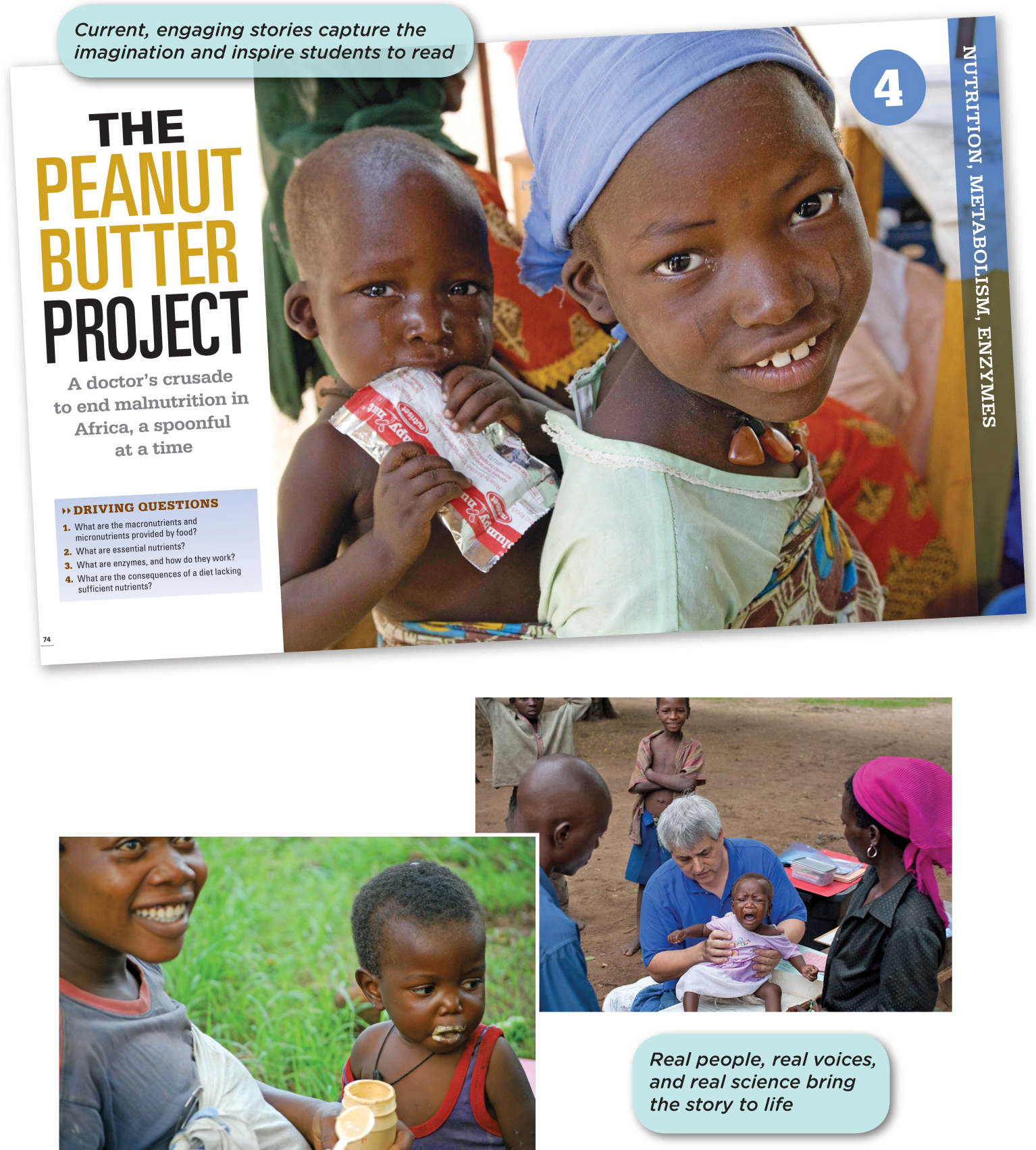
vii
Modern magazine look and feel
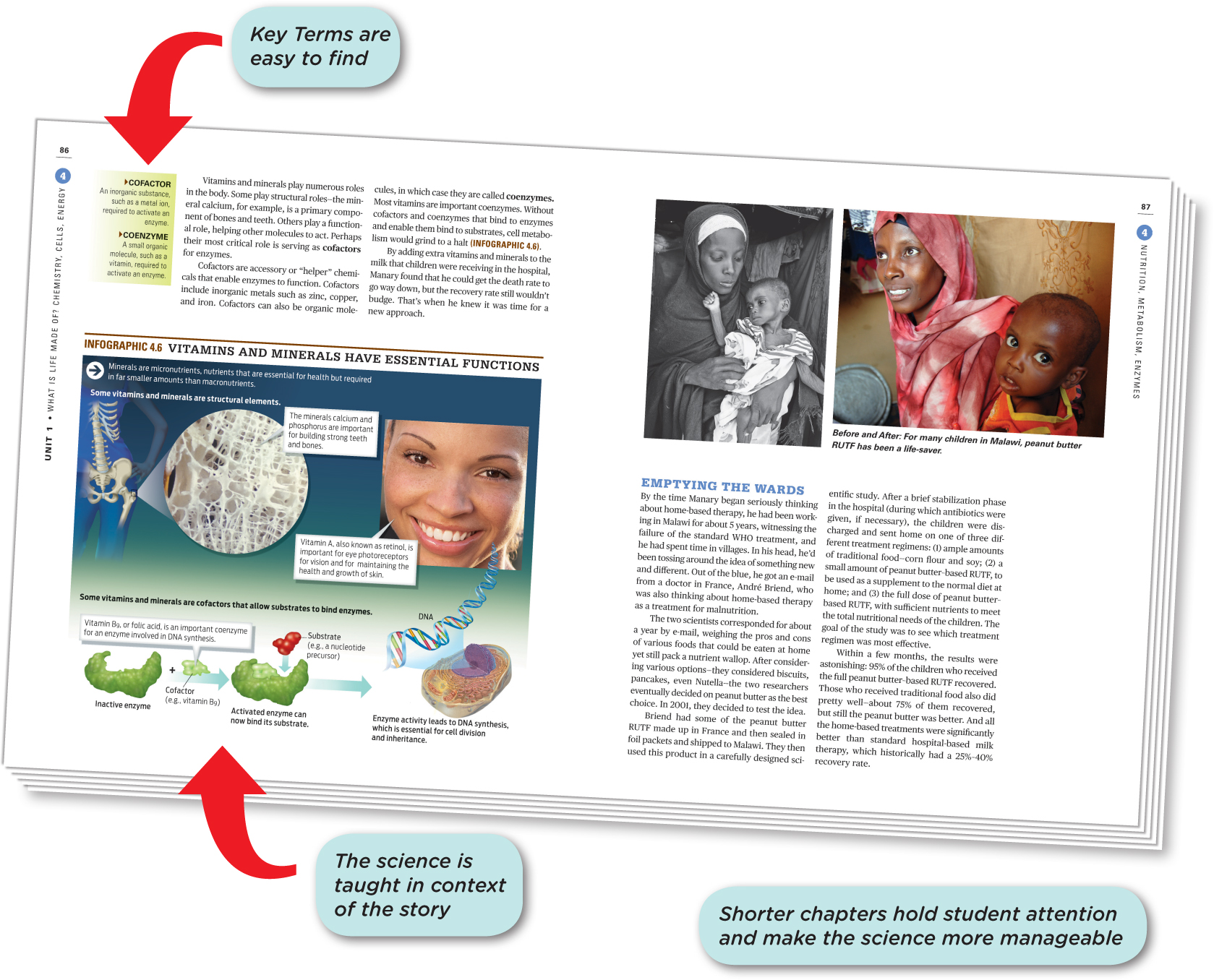
viii
Driving Questions are the roadmap for each chapter
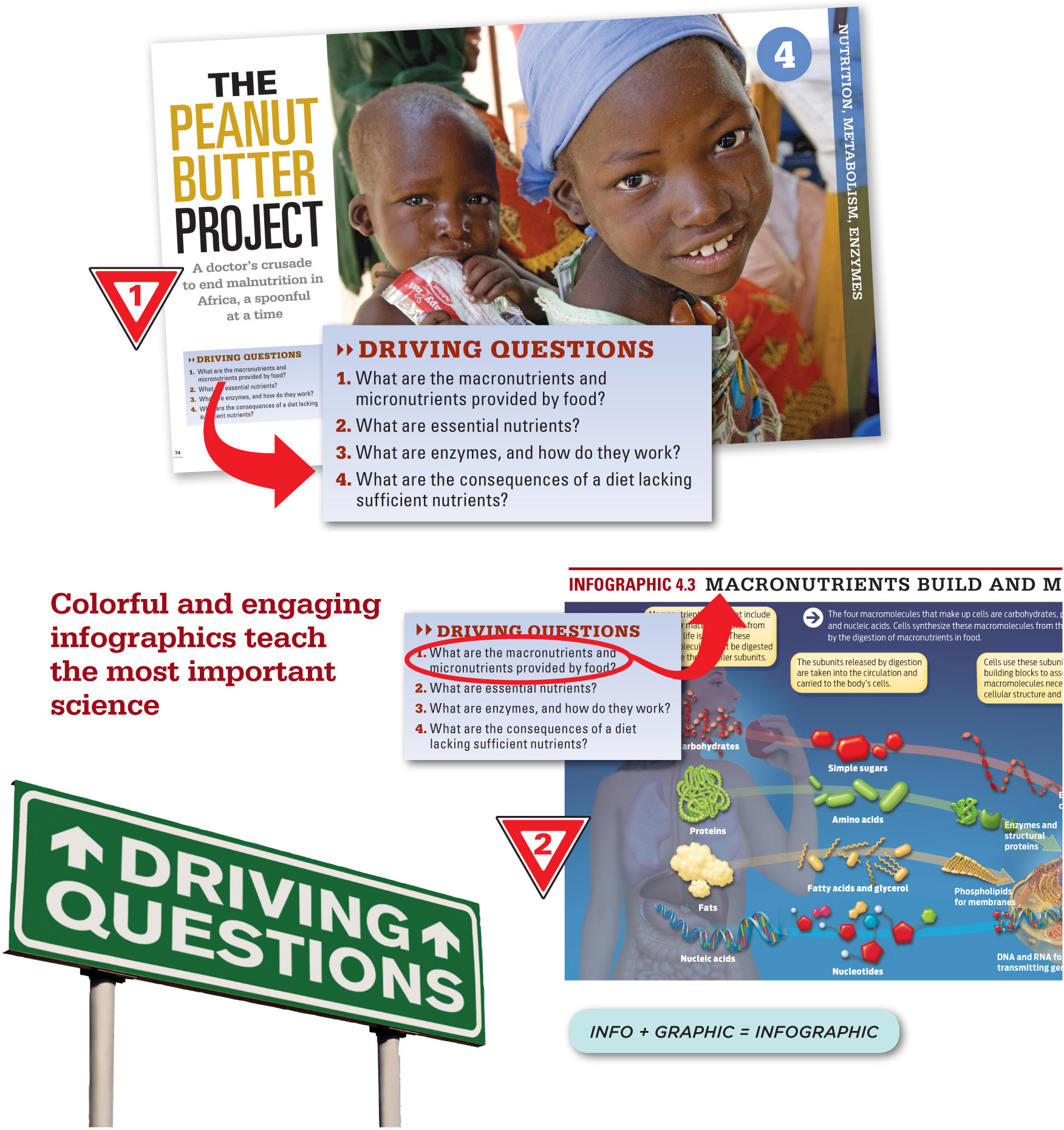
ix
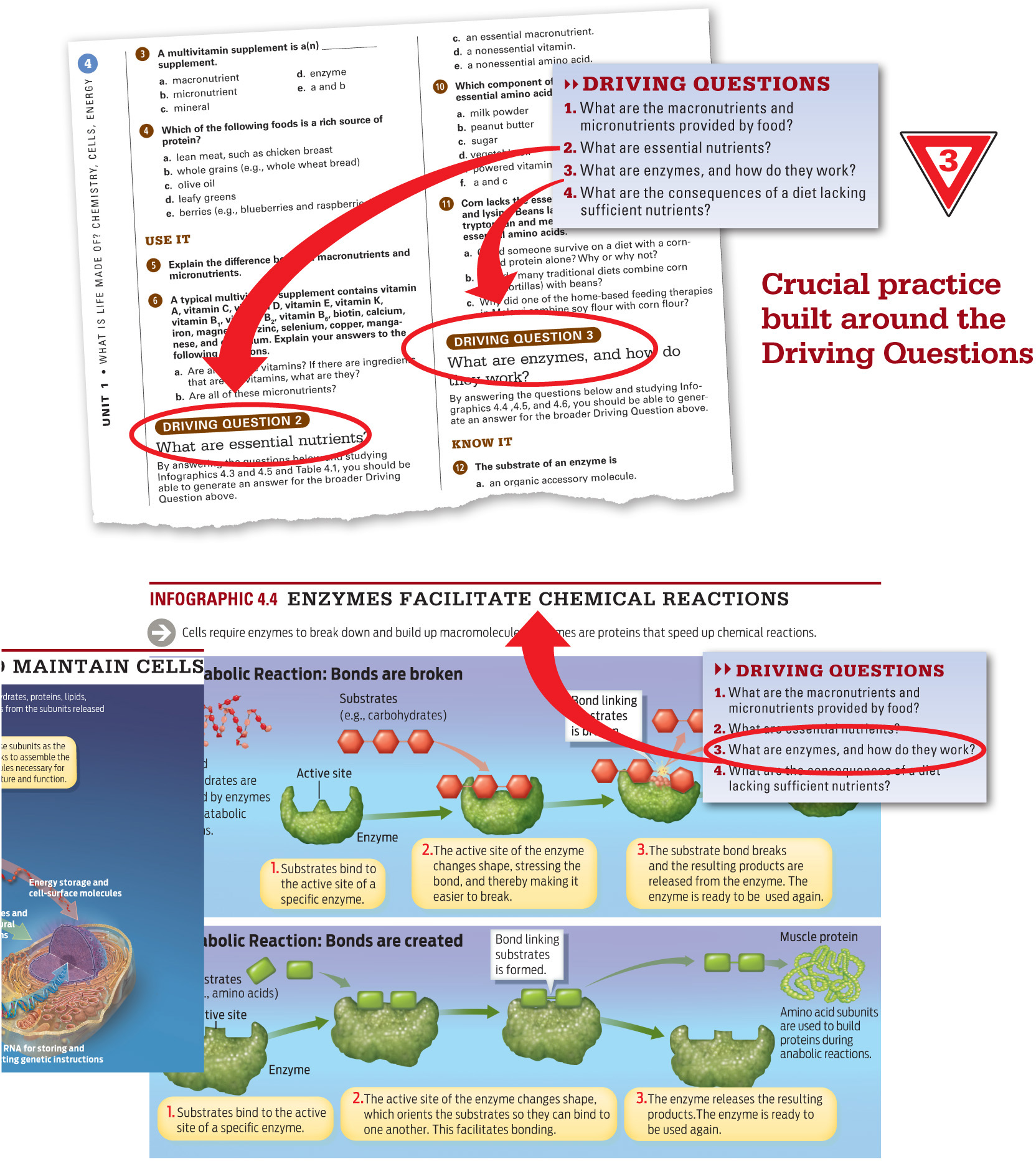
x
More ways to practice each Driving Question

xi
New data problems, case studies, and Bring it Home activities in each chapter
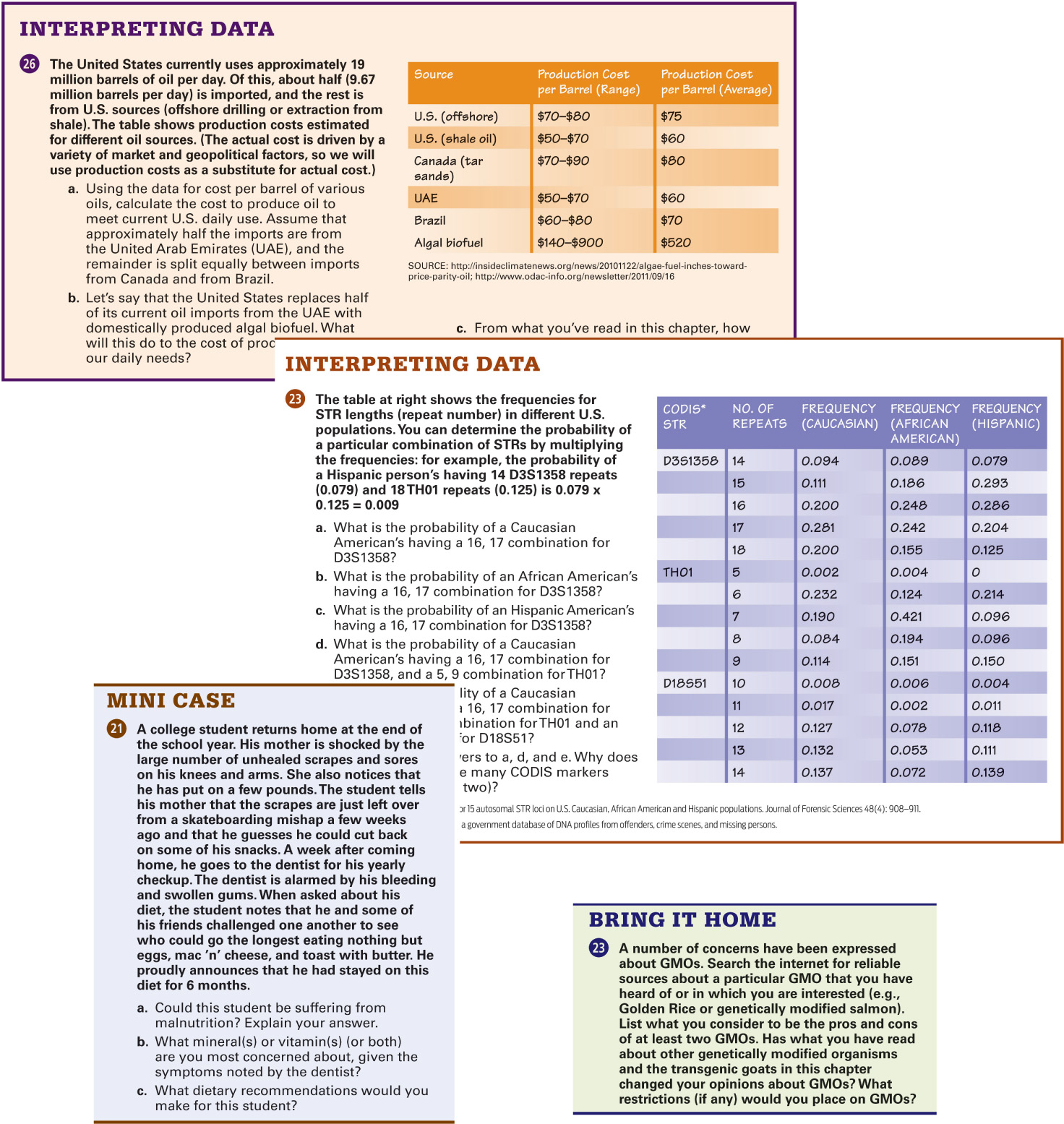
Digital Resources Complete the Package
xii
Digital Resources Complete the Package
A robust suite of digital materials provides the tools that instructors and students need to teach and learn with Biology for a Changing World. Organized by each chapter’s Driving Questions, our instructor and student resources will help ensure that students learn the science behind the stories.
Instructor Resources

The new standard in online course management, LaunchPad makes it easier than ever to create interactive assignments, track online homework, and access a wealth of extraordinary teaching and learning tools. Fully loaded with our customizable e-Book and all student and instructor resources, the LaunchPad is organized around a series of prebuilt LaunchPad Units—carefully curated, ready-to-use collections of material for each chapter of Biology for a Changing World.
Instructor’s Guide
The electronic Instructor’s Guide is designed to help instructors make the most of our story-based text. With instructional tips from the book’s authors and others who have taught using the text, the Instructor’s Guide is a comprehensive resource for any instructor teaching with our text. Features include active learning exercises, misconception alerts, links to online resources, additional scientific detail, and more.
Lecture Tools
Optimized Art
Infographics are optimized for projection in large lecture halls and split apart for effective presentation.
Interactive Animated Infographics
Every piece of art in the text is interactive. All animations are embedded in the text of the LaunchPad e-Book.
PowerPoint Slides
Prebuilt lecture slides provide a great starting point for your lecture and help with the transition to a new textbook.
Clicker Questions
Designed as interactive in-class exercises, these questions reinforce core concepts and uncover misconceptions.
Story Summaries
The story summaries offer a brief synopsis of a chapter’s main story, providing interesting details relevant to content found in the book and in online resources.
Activities from the Yale Center for Scientific Teaching
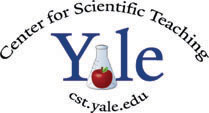
Teaching tidbits created by the Yale Center for Scientific Teaching provide new active learning exercises for the classroom. Each activity is created specifically for Biology for a Changing World as a part of Yale’s “Theory and Practice of Scientific Teaching” course for graduate science students, and incorporates important tenets of the Scientific Teaching method. Tidbits include PPT slides for class, instructions for teachers, and any additional content needed to implement the activity in your own course. To learn more about Yale’s Center for Scientific Teaching, visit http://cst.yale.edu.
Assessment

LearningCurve is a set of formative assessment activities that uses a gamelike interface to guide students through a series of questions tailored to their individual level of understanding. A personalized study plan is generated based upon their quiz results, and students can automatically link to the relevant passages in the e-Book for help.
xiii
Test Bank
A collection of more than a thousand questions organized by chapter and Driving Question and presented in a sortable, searchable environment. The Test Bank includes multiple-choice, short-answer, and matching questions. Questions can also be sorted by type, difficulty level, and important word or concept.
Instructor’s Resource Flash Drive
Combines a variety of instructor resources, including art, PowerPoint slides, Clicker Questions, and the Test Bank in one convenient package.
Course Management System
e-Packs are available for Blackboard, Canvas, Desire2Learn, and other course management platforms.
Student Resources
Student Resources reinforce chapter concepts and give students the tools they need to succeed in the course. All student resources are organized by Driving Questions and can be found in the LaunchPad.

Students have access to a variety of study tools in the LaunchPad along with a complete online version of the textbook. Carefully curated LaunchPad Units provide suggested learning paths for each chapter in the text.
Student Study Guide
Organized by Driving Question, the newly revised electronic Student Study Guide deepens students’ understanding of chapter content. The Student Study Guide digs in to each Infographic and develops students’ knowledge through a variety of open-ended and multiple-choice self-study questions.
Interactive Animated Infographics
Every piece of art in the text has been animated. All animations are embedded in the text of the LaunchPad e-Book.

LearningCurve is a set of formative assessment activities that uses a gamelike interface to guide students through a series of questions tailored to their individual level of understanding. A personalized study plan is generated based upon their quiz results, and students can automatically link to the relevant passages in the e-Book for help.
Pre-Quiz Study Questions with Feedback
Quiz questions with response-specific feedback help explain concepts and correct student misunderstandings.
Art Notebook
The art in each chapter is available in PDF form for students to download and print before lectures or for individual study.
Key Term Flashcards
Students can drill and learn the most important terms in each chapter using interactive flashcards.
xiv